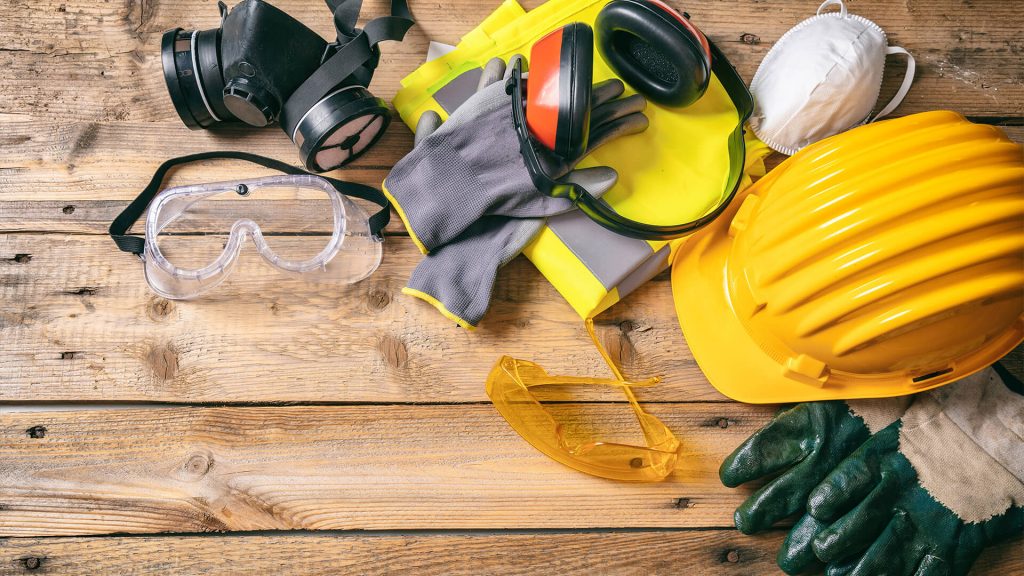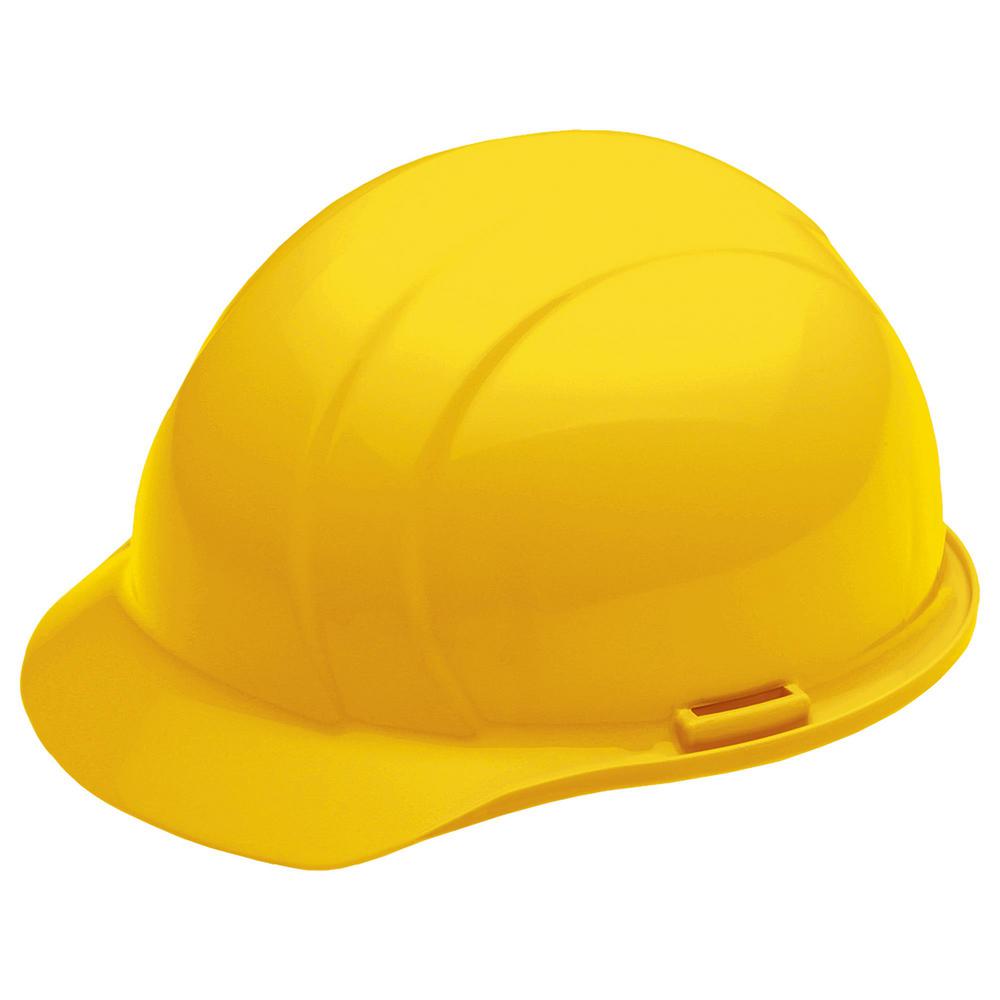Workplace Safety
Maintaining safety in your facility is imperative for the sake of your company’s workers’ health and productivity. Because there are several types of occupational hazards, you must create a multifaceted means of mitigating the risks from them. you will want to start with those fundamental requirements and expand on them wherever possible. When your workers have a safe environment, they will miss fewer days and keep your productivity at its peak.

Main Types of Safety Hazards
Several types of industrial safety hazards can threaten the physical wellbeing of your workers. Five types of risks in the workplace—physical, chemical, ergonomic, biological and safety—could cost your workers their health while decreasing the uptime and productivity of your facility. Make safety a priority at your company instead of an afterthought to see the most significant benefits to your business’ employees and its bottom line.
Physical
Physical hazards occur when the working area poses a danger to those just standing in it. For instance, noise, radiation exposure and temperature extremes can affect anyone in an industrial area, regardless of if they are working with equipment or not. Because these issues exist in the physical space, they fall under that classification of hazards.
Noise
Noise exposure can cause permanent damage to the ear, leading to life-long hearing loss. Experiencing loud noises for a short while can cause ringing in the ears—tinnitus—that can persist for hours after the exposure. But long-lasting damage can also happen, especially with loud noises or long-term exposure.
The damaging effects of noise can occur with long-term exposure to sounds. For example, after eight hours of exposure to noise at only 85 decibels, the level of a lawnmower or vacuum cleaner, can cause damage. Bulldozers and ambulance sirens are louder and can harm hearing after only an hour.
Unprotected exposure to noise can lead to higher stress levels and reduced productivity — and the sound levels do not only impact the ears. Cardiovascular health is connected to workplace noise exposure.
Radiation
Radiation exposure does not only include workers being near uranium or other nuclear powering substances. Microwave and radiofrequency radiation from exposure to magnetic and electrical fields can also harm the body, usually without overt symptoms in the short-term. Several studies link these types of fields to cancer. Adhering to the international standards of limiting exposure to no more than 10 milliwatts per square centimeter can protect your company’s employees.
Temperature Extremes
Working in unheated, non-air-conditioned facilities or outdoors can expose employees to temperature extremes. Heat and cold both can play havoc on the body’s thermoregulation systems.
Heat stress occurs from exposure to high temperatures, which may happen even on chilly days if working near furnaces or other heat-releasing devices. Illnesses that may arise from exposure to excessive heat include rash, cramps, fainting, rhabdomyolysis, exhaustion and heatstroke.

The mildest of these conditions, rash and cramps, indicate the sufferer could progressively get worse if he or she stays in the heat. Rhabdomyolysis happens when muscles break down when doing strenuous work in the heat. This condition may lead to electrolyte imbalances and kidney damage. Some people do not experience any symptoms of rhabdomyolysis.
Severe heat illnesses include exhaustion and heat stroke. Exhaustion happens when the body tries to cool itself by sweating, which causes a loss of water and salts. Symptoms include sweating, headache, dizziness, weakness and irritability. Left untreated, exhaustion may quickly progress to heatstroke, a potentially fatal condition that requires immediate care. Heatstroke occurs when the body’s temperature rises to 106 degrees Fahrenheit in just 15 minutes. The skin is dry and hot, and the person may lose consciousness.
To keep your company’s workers safe in the heat, allow them time to acclimate to high temperatures, and give them plenty of breaks and ready access to cold water and electrolyte-containing drinks at all times.
Cold weather can also be dangerous to workers. If your facility has a walk-in freezer or cooler, your company needs a plan for preventing cold-stress illnesses, even in the summer. Cold-related illnesses and injuries include hypothermia, frostbite and trench foot.
Trench foot can happen even in relatively warm temperatures of 60 degrees Fahrenheit. When the feet get wet, they release heat up to 25 times faster than if they were dry. This release of heat causes the feet’s blood vessels to constrict, which can lead to ulcerations, bleeding and gangrene from the lack of blood circulation. Encouraging workers to change out of wet footwear immediately will significantly prevent this condition.
Frostbite happens when parts of the body experience freezing damage. The risk of permanent damage to the tissues increases in those with poor circulation. Protecting the extremities with cold-weather gear can prevent this problem.
The worst cold-related illness is hypothermia, in which the body can no longer keep itself warm and the internal temperature drops to dangerous levels. Due to the cold’s effect on the brain, the victim likely does not know he or she has a problem. Have workers buddy up with someone to watch out for signs of cold-related illness. Provide a warm, heated spot for employees to take breaks in and enforce the wearing of cold-weather gear and dry footwear for everyone.
Chemical
Chemical dangers reflect exposure to hazardous chemicals. Anything that could cause illness from inhalation or touch falls under this category. Even innocuous substances in large amounts could lead to physical harm. For example, the protracted development of mesothelioma from exposure to asbestos illustrates this type of danger.
You must train your workers in safe operation and the dangers of chemicals at your facility. Providing PPE—personal protection equipment—to your workers who must handle or be around chemicals can protect them from unnecessary exposure.
Biological
Biological hazards come from living organisms, whether those are as tiny as viruses or as large as animals. Illnesses from bacteria, fungi, viruses, exposure to plants, or animal bites or scratches pose genuine risks for workers. In some cases, these illnesses may be contagious and spread throughout the workforce. Think about how many of your company’s workers call in sick during flu season to get an idea of the danger biological hazards have on productivity.
Exposure to illnesses passed on from people’s blood, breath, saliva or other vectors can lead to severe sickness. Up to 5.6 million health care and related industry workers have a risk of exposure to blood-borne diseases such as hepatitis B or C and HIV. Other industry workers could contract or pass on foodborne illnesses or have exposure to viruses by workers coming to a facility while ill.
To prevent this category of problems, require the use of PPE, such as respirators and gloves, when working with potential biological hazards.
Safety
Safety hazards appear while an employee works. Examples of safety hazards include shocks from faulty electrical equipment, slips on floors, falls from working at heights, head injuries from falling debris and cuts or worse from improperly used machinery.
Most people associate occupational safety and accident prevention, and these requirements save lives daily. To ensure the most effective protection for your workers, follow all job safety guidelines as a baseline. With these requirements in place, your company’s workers will be safer and have fewer accidents while your business will avoid fines for failing to adhere to the guidelines.
How to Protect Your Workers
Once you understand the types of risks your facility’s workers face, your company can begin to create means of protecting them in all situations. Ensuring environmental and personal safety will go a long way toward preventing accidents on the floor.
1. Require Personal Protection Equipment
Safety equipment separates workers’ bodies from hazards in the workplace, which reduces the chances of injuries. Personal protection equipment, PPE, includes hardhats, goggles, hearing protection, gloves and respirators. By requiring appropriate PPE, your company can prevent injuries from exposure to chemicals, biological agents, noise, radiation and accidents.

It is required that you supply safety equipment for your workers. Regularly check the integrity of the PPE you provide and replace any that shows signs of wear or damage. A broken hardhat will not protect a worker from a head injury the same as an intact one will.
2. Train Employees
Employees cannot practice safety measures they do not know about. Establish a culture of prioritizing safety that includes regular training and safety updates to keep all employees on the same page. Frequently scheduled training sessions remind workers of the safety steps they must take to avoid accidents and other hazards. When employees have regular reminders, they will likely not become complacent or lax in their work, which can lead to forgetting vital steps in preventing hazardous situations. During the training sessions, ask workers what they need from your business to feel safer on the job. They have the first-hand experience and know best the hazards they face.
3. Prevent Falls
Protecting workers from falls requires using the proper guardrails and barriers to keep them out of dangerous areas. Keep floors clean and dry to prevent slips and encourage appropriate non-skid footwear for all employees. OSHA takes falls very seriously, which is why the organization has such strict requirements for employers to prevent these accidents. it is required for your company to provide a worker with as hazard-free an environment as possible, keeps floors dry and provides PPE including harnesses to prevent falls and trains workers.
4. Enforce Safety
Setting out safety measures only covers part of the equation of protecting your company’s workers. Your company’s industrial safety system must include a means of enforcing the safety guidelines you establish. Take charge in preventing accidents by having regular checks of the floor and watching for whether employees are using proper safety procedures.
Consider a reward system to encourage workers to take the required steps to be safe instead of a punishment system that metes out demerits for breaking safety rules. With rewards, workers will feel more appreciated, cementing their loyalty to your business and possibly increasing their productivity.
5. Maintain Electrical Equipment
Poorly maintained electrical equipment poses a serious hazard to operators. Regularly servicing electrical equipment will prevent accidents caused by worn out wires and other mechanical failings that can cause electrocutions. Instead of waiting for a problem to occur, conduct preventative maintenance and schedule repairs as soon as something minor happens.
Ensure operators and service crew always use the proper procedures for lockout/tagout. Following standard procedures will keep workers away from hazardous electrical sources.
Make Your Facility’s Electrical Equipment Safer
Part of keeping your workers safe is ensuring the safe operation of all equipment in the facility. Maintaining your electrical equipment can increase your facility’s uptime and prevent electrocutions and fires, both of which could cause serious harm.
At BM Investments Ltd, we supply different safety equipment for businesses and homes in Rwanda and East Africa.
When planning to order for safety equipment throughout Rwanda, East Africa, you want to be sure you choose a reliable company. We can help you get the right equipment for your workplace in a timely and efficient manner.
Contact us now to discuss with your organization about safety measures for your workplace!